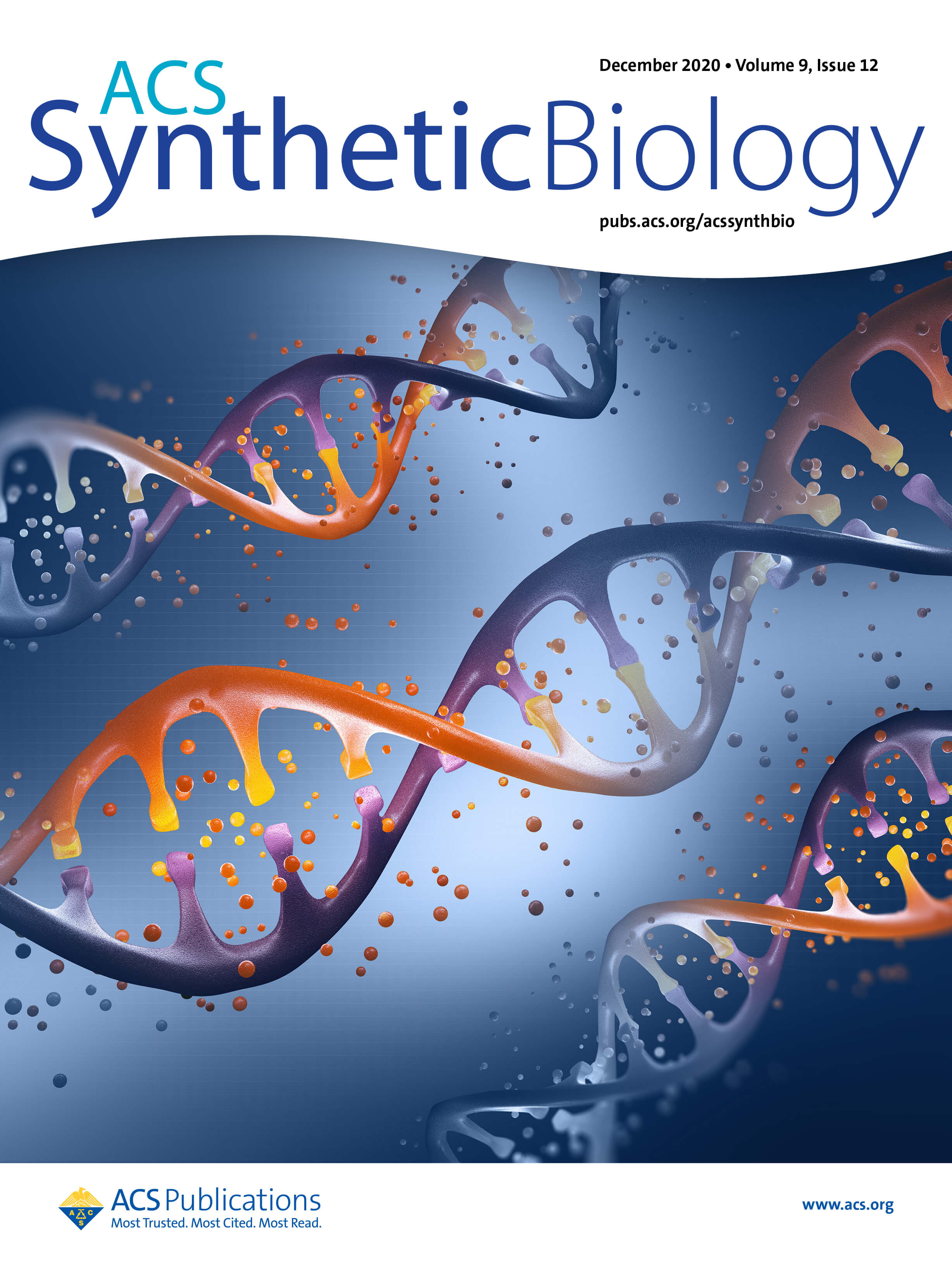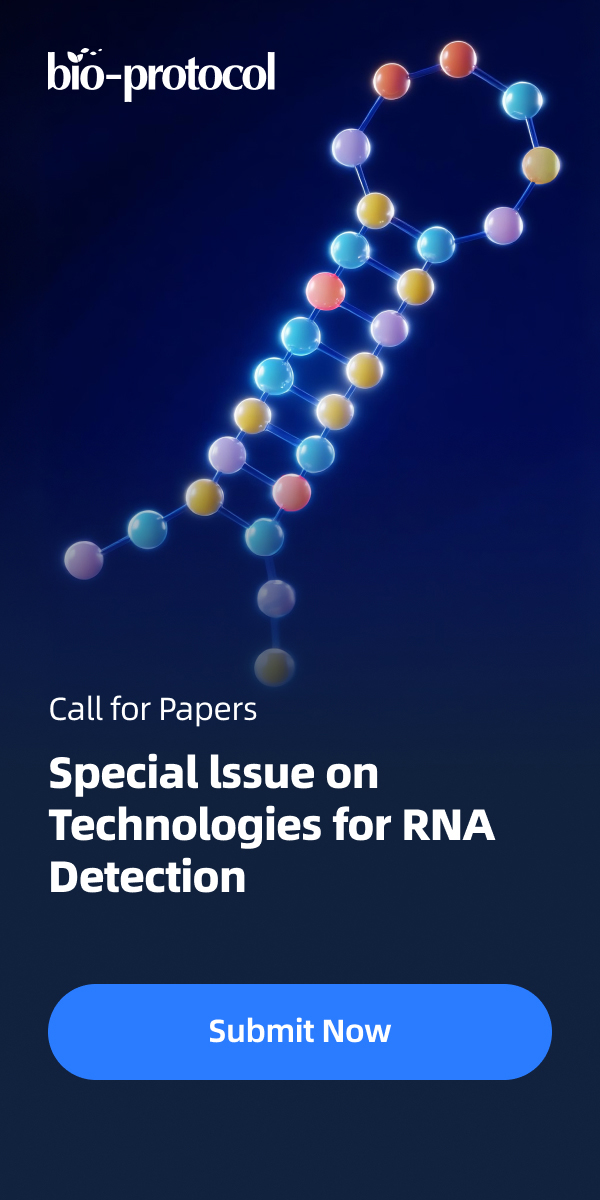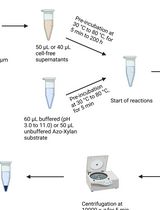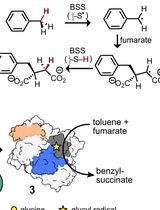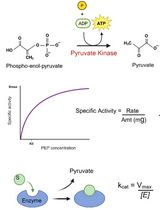- EN - English
- CN - 中文
Biophysical Characterization of Iron-Sulfur Proteins
铁硫蛋白的生物物理特性
发布: 2021年10月20日第11卷第20期 DOI: 10.21769/BioProtoc.4202 浏览次数: 3768
评审: Manjula MummadisettiRama Reddy GoluguriPallavi Prasad
Abstract
Iron-sulfur proteins are primordial catalysts and biological electron carriers that today drive major metabolic pathways across all forms of life. They can access a diversity of oxidation states and can mediate electron transfer over an extended range of reduction potentials spanning more than 1 V. Depending on the protein micro-environment and geometry of ligand, co-ordination the iron-sulfur clusters can occur in different forms [2Fe-2S], [3Fe-4S], HiPIP [4Fe-4S], and [4Fe-4S]. There are several spectroscopic methods available to characterize the composition and electronic configuration of the iron-sulfur clusters, such as optical methods and electron paramagnetic resonance. This paper presents the protocols used to characterize the metal center of Coiled-Coil Iron-Sulfur (CCIS), an artificial metalloprotein containing one [4Fe-4S] cluster. It is expected that these protocols will be of general utility for other iron-sulfur proteins.
Keywords: Iron-sulfur proteins (铁硫蛋白)Background
Iron-sulfur proteins are of ancient origin, first evolving several billion years ago. They are ubiquitous today, found among all domains of life (Beinert, 2000; Camprubi et al., 2017). These proteins drive almost all major metabolic pathways such as photosynthesis, respiration, nitrogen fixation, methanogenesis, and hydrogen metabolism (Fontecave, 2006; Shaw et al., 2013; Einsle, 2014; Gnandt et al., 2016; Wagner et al., 2016; Lubitz et al., 2019). These proteins function mainly as electron shuttles, routing electrons to the active sites of redox-active enzymes (Johnson et al., 2005; Cordes and Giese, 2009). Furthermore, iron–sulfur proteins are also involved in non-redox functions, such as aconitase, which senses low iron concentrations within cells (Flint and Allen, 1996; Beinert and Kiley, 1999). There are several common cluster compositions, including [2Fe-2S], [3Fe-4S], and [4Fe-4S]. Due to this chemical diversity, they can mediate the transfer of electrons over an extended range between +500 and -680 mV (Kyritsis et al., 1998; Brzoska et al., 2006; Liu et al., 2014).
In this paper, we describe protocols to characterize iron-sulfur proteins using Coiled-Coil Iron-Sulfur (CCIS), an artificial protein [4Fe-4S]-binding protein as a case study (Jagilinki et al., 2020). The CCIS/pET-28a (+) DNA plasmid has been commercially procured (GenScript, USA) [refer toGrzyb et al. (2010) andJagilinki et al. (2020) for the amino acid sequence of the CCIS protein]. The molecular weight of CCIS is 11.6 kDa, and its extinction coefficient at 280 nm is 16,500 (M-1cm-1). [4Fe-4S] clusters are highly sensitive to oxygen and require completely anaerobic conditions to study and characterize them (Imlay, 2006). Anaerobic conditions can be maintained in the lab using an anaerobic chamber with 95% nitrogen and 5% hydrogen. The presence of metal ions within the protein enables them to be characterized by several additional biophysical techniques, such as UV-Vis spectroscopy, Electron Paramagnetic Resonance (EPR), and Inductively coupled plasma atomic emission spectroscopy (ICP-AES). The protocols that follow are examples of relevant biochemical and biophysical methods to characterize CCIS and related molecules, specifically UV-visible absorption spectroscopy, Circular Dichroism (CD), thermal denaturation (both secondary structure and [4Fe-4S] cluster), Electron Paramagnetic Resonance (EPR), and Inductively coupled plasma atomic emission spectroscopy (ICP-AES).
Materials and Reagents
Centricon® centrifugal filters (Millipore, catalog number: UFC801024)
1.7 ml Eppendorf tubes (VWR, catalog number: 87003-294)
Pyrex test tubes (VWR, catalog number: 60815-104)
1 cm cuvettes with airtight caps for UV and CD (Hellma, catalog number: 117200F-10-40)
1 mm cuvettes with airtight caps for CD (Hellma, catalog number: 110-1-40)
4 mm quartz EPR tubes (Wilmad, catalog number: 707-SQ-250M)
Rubber caps for EPR tubes (McMaster, part number: 92805K7)
PD 10 Desalting Columns (GE, catalog number: GE17-0851-01)
Tris-base (J.T. Baker, catalog number: 410901)
Sodium chloride (NaCl) (Sigma-Aldrich, catalog number: S9888)
Glycerol (Sigma-Aldrich, catalog number: G6279)
Liquid helium for EPR experiments
Nitric acid (HNO3) (Sigma-Aldrich, catalog number: 225711)
Iron Standard for ICP (Millipore, catalog number: 43149)
Sulfur Standard for ICP (Millipore, catalog number: 18021)
Copper(II) sulfate pentahydrate (CuSO4·5H2O) (Sigma-Aldrich, catalog number: 203165)
1 M Sodium dithionite (Na2S2O4) (Merck, catalog number: 1065070500) (see Recipes)
Buffer A (see Recipes)
Buffer B (see Recipes)
Buffer C (see Recipes)
Equipment
Sorvall centrifuge (Thermo Scientific, model: Sorvall LYNX 6000, catalog number: 75006590)
Mini-Centrifuge (Eppendorf, Minispin, catalog number: 22620100)
pH meter (Hanna, Edge pH meter, catalog number: HI2002-01)
NanoDrop (Denovix, model: DS-11 FX+)
UV-visible spectrophotometer (Jasco, model: V-7200 Spectrophotometer, catalog number: V-7200)
CD spectrometer (Applied Photophysics, Chirascan-plus, catalog number: V100)
EPR machine (Bruker, model: ELEXSYS-E580e, catalog number: E580)
Water bath (Fisher Scientific, Isotemp, catalog number: 205 FS-205)
ICP-AES (Agilent, model: ICP-OES 5110, catalog number: 5110)
Anaerobic chamber filled with N2/H2 (95%/5%) (Coy lab, Vinyl anaerobic chamber, catalog number: Type A)
Rectangular EPR resonator (Bruker 4102ST)
Oxford helium-flow cryostat (ESR900)
Software
Spectra Manager Suite (provided by Jasco for V-7200 Spectrophotometer)
Chirascan Q100 Software (provided by Applied Photophysics for Chirascan-plus V100 CD spectrometer)
Xepr software (provided by Bruker for ELEXSYS-E580e EPR machine)
Igor Pro for data analysis (License required from www.wavemetrics.com )
Procedure
文章信息
版权信息
© 2021 The Authors; exclusive licensee Bio-protocol LLC.
如何引用
Jagilinki, B. P., Paluy, I., Tyryshkin, A. M., Nanda, V. and Noy, D. (2021). Biophysical Characterization of Iron-Sulfur Proteins. Bio-protocol 11(20): e4202. DOI: 10.21769/BioProtoc.4202.
分类
生物物理学 > EPR波谱
生物化学 > 蛋白质 > 活性
您对这篇实验方法有问题吗?
在此处发布您的问题,我们将邀请本文作者来回答。同时,我们会将您的问题发布到Bio-protocol Exchange,以便寻求社区成员的帮助。
Share
Bluesky
X
Copy link


